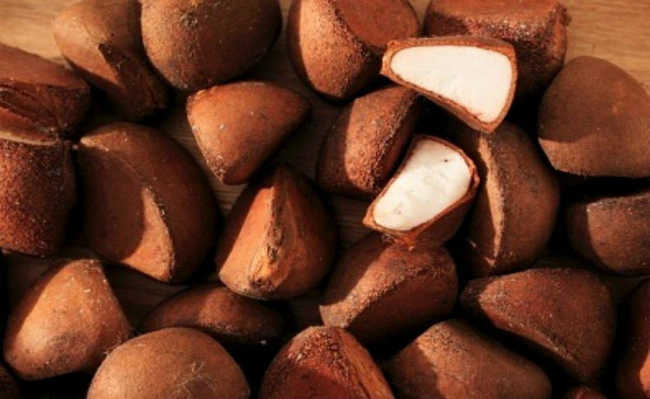what is microbiology
Microbiology studies the identification, way of life, physiology and metabolism of microorganisms

Image: CDC on Unsplash
Microbiology is the branch of biology that studies microorganisms. the word comes from the greek micros, which means small, and BIOS and logos, science of life. Thus, its study covers the identification, way of life, physiology and metabolism of microorganisms, in addition to their relationships with the environment and other species.
Emergence of microbiology
Microbiology arose from the creation of the microscope, invented by the Dutchman Antony Van Leeuwenhoek in 1674. He used the equipment to observe microscopic beings in samples of soil, saliva and feces, calling them “animalcules”. Leeuwenhoek's discovery has given rise to an important debate about the origins of the emergence of life on Earth.
The abiogenesis theory, or spontaneous generation theory, had Aristotle as its most famous defender and was considered valid until the 19th century. According to this theory, the “animalcules” would be the result of the decomposition of plants and animal tissues. Proponents of this school believed that life arose from inanimate objects.
The discovery of the microscope and other studies of microbiology allowed the emergence of the theory of biogenesis, which began to oppose the idea that raw matter could give rise to a new being. According to this theory, all living beings arise from other preexisting living beings, that is, already existing “animalcules” would give rise to new “animalcules”. The most remarkable studies carried out to explain this theory were made by Francesco Redi, in 1668, and by Louis Pasteur, in 1862, permanently discarding the theory of abiogenesis.
- what is biodegradation
What are micro-organisms
Microorganisms, generically called “germs” and “microbes”, are microscopic beings, many of them invisible to the naked eye, and that present a surprising diversity of structure and ways of life. Bacteria, fungi, protozoa, viruses and algae are part of the set of microorganisms.
- More than half of our body is not human
With this diversity of species, micro-organisms were the only beings that adapted to all places on the planet: they are in the air, at the bottom of the sea, underground, and even inside us. “There are more bacterial cells in our body than human cells”, says microbiologist Jacyr Pasternak, from Hospital Albert Einstein, in São Paulo.
Importance of microorganisms
Although they are the smallest forms of life, micro-organisms make up the majority of the Earth's biomass and carry out many chemical reactions essential for other organisms. Furthermore, humans, plants and animals are closely dependent on microbial activity for nutrient recycling and organic matter degradation. Therefore, microorganisms are extremely important for the support and maintenance of life.
- Humus: what it is and what are its functions for the soil
Areas of microbiology
Microbiology is a broad field of study, which allows for various researches to be carried out. The fields of activity of microbiology are: medical microbiology, pharmaceutical microbiology, environmental microbiology, food microbiology and microbial microbiology.
medical microbiology
Medical microbiology focuses on pathogenic microorganisms. Its performance is related to the control and prevention of infectious diseases.
- What are zoonoses?
Pharmaceutical Microbiology
Pharmaceutical microbiology is focused on the study of microorganisms that participate in the making of medicines, especially antibiotics.
- Antibiotic dumped in nature generates superbugs, UN alert
environmental microbiology
Environmental microbiology, related to biogeochemical cycles, focuses on bacteria and fungi that act in the decomposition of organic matter and chemical substances found in nature.
food microbiology
Food microbiology has as its object of study the microorganisms used in the food industry, with a focus on food safety and shelf life, processing of traditional products and development of new food products, with sensory attributes suitable for different consumer audiences.
Microbiology Microbiology
Microbiology microbiology focuses its studies on the genetic and molecular manipulation of microorganisms.
Classification of microorganisms
According to their characteristics, microorganisms can be classified into: prokaryotes or eukaryotes, autotrophs or heterotrophs, and unicellular or multicellular.
Prokaryotes or Eukaryotes
Eukaryotic beings have complex structures, formed by inner membranes, cytoskeleton and a nucleus. Prokaryotes, on the other hand, do not contain a nucleus and other membrane-bound organelles.
Autotrophs or heterotrophs
While autotrophs produce their own food using light or inorganic chemical reactions, heterotrophs depend on organic molecules made by autotrophs for energy and complete their respiratory chair.
Single-celled or multi-celled
Unicellular organisms are formed by only one cell and multicellular ones by a variety of cells.
Examples
- Bacteria are eukaryotic and unicellular micro-organisms. Although there are autotrophic bacteria, the vast majority are heterotrophic and feed on substances produced by other living beings.
- Fungi are eukaryotic microorganisms, heterotrophs and can be unicellular, like yeast, or multicellular, like mushrooms.
- Algae are eukaryotic micro-organisms, photosynthetic autotrophs and can be unicellular or multicellular.
- Protozoa are eukaryotic, heterotrophic and unicellular micro-organisms.
- Viruses are acellular microorganisms that do not have their own metabolism. Therefore, all its activities are carried out within another organism.
Lifestyle
Microorganisms are divided into different groups, according to their way of life, which can be saprobes, parasites or symbionts.
saprobes
Known as recycling microorganisms, saprobes are decomposers of dead organic substances, and diners, that is, they maintain associations without detectable benefits or harm.
- Fungi and bacteria are the main microorganisms that decompose organic matter.
- An example of commensalism can be observed in the soil between fungi and bacteria. Glucose, produced from the degradation of cellulose by fungi, is used by some bacteria.
parasites
Parasites are micro-organisms that cause damage to living cells of other organisms, and may manifest in different degrees. Are they:
- Obligatory parasitism: there is a complete dependence on the host for its survival;
- Multiple parasitism: the microorganism has multiple hosts;
- Optional parasitism: they may have two life habits, surviving both inside a host (parasitic life habit) and outside it (free life habit);
- Hyperparasitism: a condition in which a second parasite develops into a first parasite;
symbionts
Microorganisms that associate in the long term, which can be a beneficial relationship for both individuals or not. These associations can be mutualistic or antagonistic.
mutualistic symbiosis
Mutualistic symbiosis is a beneficial relationship where there is morphological and physical interaction between microorganisms. Lichens are an example of this association, which occurs between fungi and algae or cyanobacteria and fungi. While algae and cyanobacteria provide organic compounds to fungi, they guarantee an environment more conducive to survival, as they provide them with protection.
antagonistic symbiosis
Antagonistic symbiosis is a relationship where one of the microorganisms is harmed at the expense of the other. Fungi that produce antibiotic substances inhibiting the growth of bacteria are an example of this association.
Pathogenic microorganisms
They are microorganisms capable of producing infectious diseases in their hosts under conditions favorable to their survival and development. There are bacteria, fungi, viruses, protozoa and algae that fall into this class.
- What is mold and why is it dangerous?
Non-pathogenic microorganisms
These are micro-organisms that are around us participating in various processes of nature and that do not cause health problems. In some cases, they are even beneficial. Probiotics like lactobacillus are an example of this class, as the consumption of these live microorganisms improves the microbial balance in our gastrointestinal tract.
- What are probiotic foods?
Conclusion
Microbiology is of great importance as a basic and applied science. Basic science highlights the physiological, biochemical and molecular studies of microorganisms. Applied science, on the other hand, focuses its studies on industrial, food and disease or pest control processes.
Despite advances in microbiology in recent years, it is estimated that only one percent of all species of microorganisms on the planet have been catalogued. Although they have been studied for over three centuries, there is still much room for the development of this very important field.










